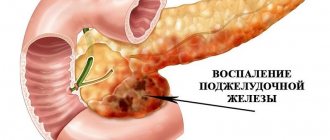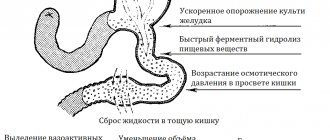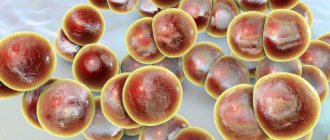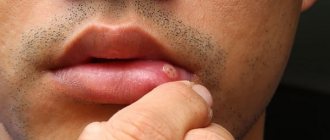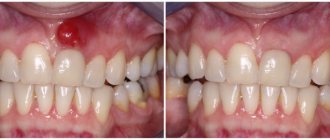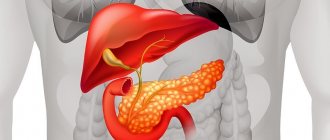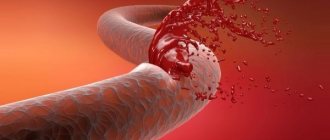Is it possible to remove the pancreas?
Damage to the pancreas occurs due to poor nutrition, alcoholism, overeating or eating fatty foods . It may develop inflammation, form a cyst or tumor. Sometimes cholelithiasis becomes a factor in the development of pathology.
Complete or partial excision of the pancreas is performed only in cases where all other treatment methods have been tried. Urgent intervention is required if it ruptures during injury.
This can only be done by highly qualified specialists using special equipment. For patients who experienced severe pancreatitis, pancreatic surgery helped save their lives - their reviews speak about this.
Other indications for such surgery:
- purulent inflammation with the formation of an abscess;
- cyst suppuration;
- stones in large gland ducts.
To help, pancreatic surgery may include:
- necrectomy (partial excision of an organ with removal of the necrosis area);
- removal of the tail or other part;
- pancreatectomy (complete removal).
Complete removal of the pancreas is necessary in the following cases:
- purulent melting;
- total pancreatic necrosis;
- strong gap.
Important! Many people are interested in what will happen if the pancreas is removed, because it is an important organ. Modern medicine has drugs that completely replace the substances that iron previously produced. However, they will have to be taken for life.
Functions of the organ
The pancreas has two different purposes: secretory and enzymatic. Forming pancreatic juice, the organ is a direct participant in the absorption and processing of food elements. Without proteins, complex carbohydrates and lipid components, our body will not be able to function normally and continue to live. The food contains all the necessary nutritional structures that undergo proteolysis thanks to the enzymatic components of the pancreas.
The second functionality of the organ is the induction of hormones. Insulin and glucagon take part in regulating carbohydrate balance in the body. It is insulin that controls the percentage of glucose in the blood. The hormone is induced by unique cells - the islets of Langerhans, which become fewer and fewer in the body with age. When hormone production is disrupted or the islets of Langerhans are inactivated, diabetes mellitus develops.
Any disturbance in the activity of the pancreas is a source of reduction in the normal functionality of the digestive system; the gallbladder is especially vulnerable and cholecystitis can develop. When pancreatic cells are damaged and disorganized, inflammation of the organ parenchyma occurs, which provokes pancreatitis.
pancreatitis of the pancreas
The disease is treated with conservative methods, without using a surgical scalpel. However, it is inflammation that is the provoking factor for other pancreatic diseases. Is the pancreas removed in the presence of large stones, necrotic processes, and tumors of various origins? And can a person live without the pancreas fully and efficiently?
There are few circumstances when it is necessary to remove the pancreas. These operations are resorted to only as a last resort. More often, they try to eliminate the inflammatory process and the complications that arise with medications.
https://youtu.be/ptUJcUKCvpw
How is the operation performed?
Pancreatic surgery is performed after the necessary preparation. For tumors, chemotherapy is first prescribed - this helps slow down the rate of formation of metastases. During a planned intervention, a patient requires a blood test, an ultrasound of the abdominal organs, and sometimes a puncture.
Two weeks before removal you should not take:
- anti-inflammatory drugs;
- analgesics;
- antipyretics;
- thrombolytics.
The operation is performed under general anesthesia. First, an incision is made in the stomach area, it is lifted and the gland is examined to determine the extent of damage. Only after this the doctor makes a final decision on its complete or incomplete resection.
At the same time, the specialist assesses the condition of nearby organs, which in some cases also need to be operated on. Usually, for traumatic injuries, laparotomy is performed, but sometimes it is possible to minimize blood loss through laparoscopy.
Head removal
In 80% of cases, tumor formations are localized in the head of the organ. In this case, it is often necessary to remove it along with the gallbladder and a section of intestine. Restoration of the digestive system is carried out by connecting the body of the gland with the stomach and the rest of the small intestine.
When the head of the pancreas is removed, the consequences of the intervention may include digestive disorders due to a lack of enzymes.
Tail excision
If the tumor or cyst is located in the tail of the organ, then partial pancreatectomy of this area is required. If necessary, resection of the spleen and nearby lymph nodes is performed. The remaining part of the organ is sutured. The rehabilitation period lasts up to 20 days; diabetes mellitus is not observed.
Carrying out the operation and preparing for it
If there is cancer, chemotherapy of the organ is most often performed before surgery. It allows you to reduce the tumor in size.
Tests are required before surgery. Most often this is:
- blood analysis;
- Ultrasound of the pancreas;
- puncture.
The doctor must first talk with the patient and notify him of some prohibitions before the operation, for example:
- Do not take non-steroidal anti-inflammatory, painkillers and antipyretics.
- Taking blood thinning medications is prohibited.
- It is necessary to exclude medications aimed against the formation of blood clots.
Surgery involving the pancreas is called pancreatectomy. It is done under general anesthesia.
Sometimes neighboring organs or parts thereof must be removed.
Complications of this operation are possible, which include bleeding, damage to adjacent tissues and infection. Sometimes the patient has a negative reaction to anesthesia and may experience low blood pressure or dizziness.
Important information: What you can and cannot eat on a diet for the pancreas
Complications most often occur in people who smoke, are overweight, or have heart disease. Those who eat poorly and the elderly need to be especially careful.
Rehabilitation period
To prevent negative consequences from developing after removal of the pancreas, it is necessary to undergo full rehabilitation and follow all the advice of a specialist. A course of antibacterial therapy for 2-3 weeks will avoid purulent-septic complications.
To relieve pain, analgesics are used, replacement therapy is prescribed: taking enzymes to normalize digestion and administering insulin to utilize glucose.
While a person is in the hospital, he needs a special menu, which involves eating only light and pureed food. It is best to drink herbal decoctions, clean water and mineral water without gas. From the sixth day, the diet is gradually expanded to include solid food, which is allowed to be eaten in small portions.
Indications for surgery
The pancreas produces enzymes, without which digestion in the lumen of the small intestine is impossible. These enzymes ensure the breakdown of fats, proteins and carbohydrates. Complete digestion of food and the release of useful components from it occurs precisely thanks to the pancreas. However, this organ has a limited safety margin. Complications and disruptions in its functioning lead to inflammation and severe pain. This phenomenon is called pancreatitis. The disease occurs in acute and chronic forms. The consequences of pancreatitis can be quite severe and life-threatening.
Indications for surgery in patients are the following pathologies:
- Complications that arise after removal of the gallbladder. Surgery on this organ is performed due to the formation of stones, or when the bile ducts are twisted. Without bile, the process of digesting food is significantly difficult, which creates additional stress on the spleen. As a rule, after removal of the gallbladder, patients have to adhere to a constant diet. Otherwise, the likelihood of pathological consequences for the pancreas is very high.
- Violation of vital function and complete failure of the spleen. This pathology leads to necrosis. In such cases, surgery to remove the pancreas is performed immediately. Recovery takes quite a long time, but even with such a pathology, people live full lives.
- Formation of tumors of various types. Even a simple cyst is potentially life-threatening. Under the influence of smoking, alcohol and unhealthy food, it can degenerate into a malignant formation.
- Penetration of stones from the ducts after removal of the gallbladder. As a rule, it is almost impossible to remove a stone from the gland with a prognosis for its recovery. The tissues of this organ grow together very poorly.
- Chronic pancreatitis with a poor prognosis. If there are no positive results with drug therapy, a cure can only be achieved with cholecystectomy.
Today, surgery to remove the spleen is performed in almost all hospitals where there is a surgical department. In the vast majority of cases, surgery is successful.
Possible consequences
If a patient's pancreas was removed to save his life, what could be the consequences of this operation? Most often, the following deviations are observed during resection:
- persistent diarrhea;
- weight loss or gain;
- infectious complications;
- bleeding;
- peritonitis;
- development of diabetes mellitus;
- vascular or liver failure.
Factors that increase the likelihood of complications:
- severe concomitant diseases;
- elderly age of the patient;
- drinking alcohol;
- wrong diet.
Important! If a person has had their pancreas removed, negative consequences and complications can be minimized by following all the doctor’s instructions regarding diet and lifestyle changes. With the right approach, after a year the general condition improves significantly.
Rehabilitation process after pancreatectomy
After pancreatectomy, the patient may experience complications such as:
- internal bleeding;
- seam divergence;
- infection at the removal site;
- the appearance of bedsores due to prolonged lying down.
The rehabilitation process after surgery includes providing the patient with special care in the first 3 days.
The first days after pancreatectomy are dangerous for patients due to possible reactions of their body to the administered anesthesia.
There is a high risk of damage to neighboring organs. The intensity of postoperative monitoring of the patient's condition does not depend on whether the entire gland is removed or only part of it.
In the future, the patient must adhere to certain rules:
- Follow a strict diet with the exclusion of spicy, fatty, fried and smoked foods from the diet.
- For the rest of your life, regularly take medications containing digestive enzymes. With their help, replacement therapy will be carried out.
- Regularly inject insulin into the body to maintain normal blood sugar levels.
A patient who has had their pancreas removed is especially in need of replacement therapy.
To maintain normal digestion, he is prescribed enzyme preparations, including:
- Micrazim - for the absorption of proteins, carbohydrates, fats;
- Vestal - to stimulate digestion;
- Creon - as a replacement for the lack of enzymes in the body.
Enzyme preparations are also necessary to eliminate nausea and intestinal disorders in patients. These symptoms are typical for the postoperative period.
All patients with a removed pancreas develop type 1 diabetes. They need constant injections of insulin, which will replace the lack of hormone in the body.
Particular attention is paid to the diet of such patients.
Recommendations are provided for them:
- strict diet;
- adequate fluid intake;
- eating only chopped boiled, stewed, steamed, baked food;
- fractional meals;
- exclusion of coarse fiber from the diet.
If the patient follows the rules of rehabilitation, it is possible to significantly prolong their life and improve its quality.
Video material about the pancreas and its importance for the body:
Nutrition after surgery
After organ resection, you should follow a diet for the rest of your life. For the first time after surgery, complete fasting is recommended; you can only drink up to 1 liter of water per day in small sips. All substances necessary for the body to function are administered through an IV. On day 5-6, you can start eating pureed soups, crackers, biscuits and drinking weak tea.
After a week, you are allowed to add a second dish: pureed vegetables, mashed porridge, dry bread, steamed minced meat. From day 10, low-fat cottage cheese, vegetable soups, and dietary meat and fish dishes are added.
You need to eat little and often. The daily diet should be divided into 4-5 small portions. The menu should contain proteins, vegetable oil, vegetables, herbs, berries and fruits. Salt is limited, liquids must be drunk at least 2 liters.
It is prohibited to eat chocolate, fatty and spicy foods, baked goods, fast food, semi-finished products, canned food and seasonings. It is not recommended to drink alcohol, drink strong tea and coffee.
Important! If you follow all the rules and constantly take replacement medications, you can significantly improve your condition. An important role is played by contacting a psychologist - this is evidenced by the reviews of patients after pancreatic surgery.
Head resection
In medical practice, resection of the head part is considered one of the most popular options for intervention on the pancreas. This is explained by the fact that for some reason a tumor or cyst is most often localized there.
To increase the chances of a successful early recovery, the surgical procedure is divided into several stages:
- removal of the affected area;
- excision of affected adjacent areas from adjacent internal organs;
- restoration of the integrity of the working ducts;
- reconstruction of the digestive canal;
- restoration of gallbladder functionality.
To get to the gland, which is far hidden in the abdominal cavity, doctors use general anesthesia. But here you should pay close attention to those people who have not experienced anesthesia before. They should first conduct an allergy test to avoid the risk of anaphylactic shock.
In order to free up his viewing angle, the expert uses special equipment - a laparoscope, and the operation itself is labeled laparoscopic.
Using a high-precision device, it will be possible to study the condition of the organs, as well as examine the intended area for surgery. At the very beginning, the specialist is obliged to block the vessels that feed the pancreas. Then the main phase is carried out, and everything ends with the reconstruction of the digestive system.
To do this, it is necessary to articulate the pancreas with the intestines and stomach, for which anastomoses are used. This means that some organs will be connected to each other so that they “learn” to do the work of those that had to be removed.
Nutrition and diet without pancreas
For two days from the day of surgery, the patient must fast. Only clean water without gases is allowed; you can drink up to one liter per day, little by little.
On the third day, you can drink unsweetened tea, eat a steamed egg white omelette and unleavened soup. Rice or buckwheat porridge with water or milk is allowed.
After 7 days, you can add a little wheat bread, a piece of butter and cottage cheese, pureed soups without cabbage to the diet.
On day 10 you can introduce into your diet: soufflé from low-calorie fish or meat, steamed meatballs.
- Fatty foods;
- Sweet;
- Soda;
- Fast food;
- Cabbage, radish, radish;
- Sour fruits;
- Fried, smoked;
- Alcoholic drinks;
- Spices.
- Salt up to 8 mg per day;
- Carbohydrates.
The diet should look like this:
- Protein foods (meat, cottage cheese, dairy products, proteins);
- Not sweet and lightly salted dishes;
- Compotes, juices, dairy products with a small percentage of fat content;
- Low-calorie fish and meat should be the main ingredients;
- Low fructose fruits;
- Puréed vegetables and pureed vegetable soups;
- Hard cookies and wheat bread.
The pancreas is a unique organ in the sense that it is both an external and internal secretion gland. It produces enzymes necessary for digestion and enters the intestines through the excretory ducts, as well as hormones that enter directly into the blood.
The pancreas is located in the upper floor of the abdominal cavity, directly behind the stomach, retroperitoneally, quite deep. It is conventionally divided into 3 parts: head, body and tail. It is adjacent to many important organs: the head goes around the duodenum, its posterior surface is closely adjacent to the right kidney, adrenal gland, aorta, superior and inferior vena cava, many other important vessels, and the spleen.
structure of the pancreas
The pancreas is a unique organ not only in terms of its functionality, but also in terms of structure and location. It is a parenchymal organ consisting of connective and glandular tissue, with a dense network of ducts and vessels.
In addition, we can say that this organ is little understood in terms of etiology, pathogenesis, and, accordingly, treatment of diseases affecting it (especially acute and chronic pancreatitis). Doctors are always wary of such patients, since the course of pancreatic diseases can never be predicted.
This structure of this organ, as well as its awkward position, makes it extremely inconvenient for surgeons. Any intervention in this area is fraught with the development of many complications - bleeding, suppuration, relapses, release of aggressive enzymes beyond the organ and melting of surrounding tissues. Therefore, we can say that the pancreas is operated on only for health reasons - when it is clear that no other methods can alleviate the patient’s condition or prevent his death.
Postoperative recovery
Doctors insist that rehabilitation after resection is as important as the operation itself. This is explained by the fact that the patient often has poor absorption of substances supplied with food after surgery. Because of this, the body faces an acute deficiency of digestive enzymes.
To neutralize discomfort in the peritoneum on a regular basis, you will have to use enzyme-containing drugs, which are prescribed by the attending physician strictly individually. He will also tell you the regimen for taking them and the specific dosage. When resection of most of the pancreas, insulin is additionally prescribed according to the circumstances.
In the first days after surgery, a person is generally obliged to adhere to the basics of therapeutic fasting, as well as follow the doctor’s instructions. If the patient has become a victim of pancreatic necrosis of the pancreas, then he will have to be examined more often by a gastroenterologist after discharge. This categorical approach is explained by the increased risks of possible complications.
Life does not end after the removal of this organ; you just need to adhere to the right diet. The diet should exclude provocative foods, which include potatoes, as well as confectionery and other sweets, coffee, fried foods, and whole milk.
The traditional protein diet involves a complete rejection of problematic fatty foods and spicy, smoked foods. All of them put too much strain on a weakened digestive system. Pickles are prohibited. And everything else becomes available again.
The main thing is to eat small portions throughout the day and drink at least one and a half liters of water to maintain your water balance at the proper level. Giving up bad habits also helps improve health.
Outpatient mode
When changing the hospital regime to a home routine, a change in nutrition occurs, which means that at this time the exact dosage of medications is adjusted and established. Therefore, visits to the doctor and laboratory are quite frequent at first. Based on the test results, a course of treatment is developed after removal of the pancreas.
At the same stage, the diet is also adjusted - compared to the stationary diet, the menu is noticeably expanded.
Important! Proper nutrition after removal of the pancreas is one of the main elements of treatment. Neglecting nutritional recommendations is fraught with serious negative consequences.
Nutritional Features
At first, the menu of a person who has had the pancreas removed is dominated by protein foods, while fats and carbohydrates are supplied in minimal quantities. With the establishment of medication doses, the diet is slightly expanded, some vegetables and fruits, as well as cereals are added, but quickly digestible carbohydrates (sweets) are prohibited throughout life.
Basic nutrition rules:
- frequent split meals - small portions of food are taken 5 - 6 times a day;
- daily calorie intake – no more than 2000 kcal;
- pureed/homogenized or pureed form of preparation, especially at the beginning of rehabilitation;
- thermal restrictions when serving dishes - food should not be hot, but only warm or at room temperature;
- exclusion of sweets (including fruits), fatty, spicy, salty, smoked foods;
- a ban on foods that cause flatulence or excessive peristalsis - mushrooms, legumes, white cabbage (can be replaced with cauliflower, Chinese cabbage and zucchini);
- restriction on baking - only dried rye bread and unsweetened unsweetened cookies (dry) are allowed;
- ban on whole milk (replaced with fermented milk drinks), industrial drinks, carbonated water;
- ban on alcohol, in the long term severe restrictions.
With the correct amount of digestive enzymes and nutritional restrictions, unpleasant consequences are minimal or absent, because the diet is quite varied.
Eating according to the new standards becomes habitual within a month after the operation.
Subsequent rehabilitation
After a period of active outpatient monitoring, the person is registered for diabetes mellitus and post-pancreatectomy status, and is considered a patient with a chronic disease throughout his life and undergoes periodic medical examinations. If necessary, they continue psychological rehabilitation begun in the hospital or are referred to a psychologist for the first time. Not all patients require this kind of help; there are lucky ones who have organically come to terms with their new situation from the very beginning of rehabilitation. For them, the consequences of the operation are limited to physical inconvenience.
The issue of disability is decided individually depending on the cause and consequences of removal of the pancreas, the extent of the operation and the prognosis for life.
During this period, the person operated on is already partially adapted to life without a pancreas, sees prospects for improving his condition, and is accustomed to drug compensation. The daily routine includes some physical activity to improve digestion, prevent stagnation of bile in the ducts, prevent obesity, and maintain vitality.
Important! Physical activity must be strictly dosed: after removal of the pancreas, fatigue is not recommended.
Thermal procedures - baths, sunbathing in hot weather - are also contraindicated. Swimming in the sea (not too active) and air baths in the shade are very beneficial.
Sometimes, with the permission of a doctor, fasting (fasting) days can be carried out - no more than once a week.
Thus, some simple rules will help you maintain a fairly high quality of life after removal of the pancreas and avoid serious consequences:
- strict adherence to diet throughout life;
- regular intake of digestive enzymes and insulin administration;
- correct alternation of work and rest, avoiding overwork;
- calm psychological attitude, exclusion of stressful situations;
- eliminating unhealthy habits from life - not only drinking alcohol and illegal drugs is harmful, but also smoking tobacco, which causes vasoconstriction;
- regular examinations in the clinic, compliance with all doctor’s recommendations.
What indications require removal of the pancreas?
If drug treatment and therapy do not help, the doctor is forced to recommend the patient surgery to partially or completely remove the pancreas.
Operation is needed when:
- Presence of a tumor;
- Fistula;
- False cyst;
- Malignant neoplasms;
- Local organ damage;
- Destruction of pancreatic tissue;
- With complications of chronic pancreatitis;
- Some types of pathologies;
- Stones that block the gland channels;
- Pancreatic necrosis, if medications are powerless;
- Peritonitis of the pancreas.
If the gland is not completely removed, the extracted tissue undergoes laboratory testing. They help to formulate the most effective method of treatment and rehabilitation after surgery.
